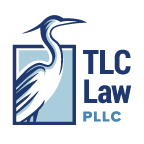I get so frustrated with S corporations that I think it deserves a rant…I mean blog post. Many clients call my office for business or tax planning advice in all phases of business ownership. Some are at the beginning and still able to easily implement my suggestions (and I love those); others are twenty years into an accounting nightmare and ready to sell to a third party, and of course, there is a wide range in between these extremes.
One thing that I do see with almost all my clients is a misunderstanding of S corporations. S corporations are believed to be the savior and ultimate tax planning tool for all small businesses. Sometimes that is the case. Sometimes not.
Reasons to choose an S Corporation
Let’s first discuss the two reasons why individuals choose to make an S election to be taxed as an S corporation.
Reason one: Simplicity
When two or more individuals own a business, they generally have three options for entity tax structure:
- C corporation
- S corporation
- Partnership
C corporations are out of the question most of the time. Usually (although this has changed some in recent years after TCJA) only large, publicly traded companies are C corporations.
For almost all of my clients in East Texas, C corporations are not a viable option. That really leaves two options: S corporations or partnerships.
Individuals choose the S corporation because it bypasses the increasingly complex tax regime for partnerships. When compared to the tax code for partnerships, S corporations are a walk in the tax park. This equates to less money spent on accountants every year. YEA! Three cheers for that.
Reason two: Employment tax savings
This is the reason everyone knows about. S corporations fall into a strange gap. They are not C corporations, but many tax provisions that govern C corporations also govern S corporations, and in so many ways they resemble partnerships…but not always.
S corporations are an odd hybrid. Basically, S corporations can save on employment tax because, like C corporations, the entity is only required to pay employment tax on wages paid to its employees. The rest of the entity’s earnings are not subject to employment tax. Employment tax is generally 15.3%, but the effective tax rate for the value of the tax savings is closer to 13%, depending on the taxpayer’s tax brackets.
Let’s use 13% for our calculations. If an S corporation generates $100,000 of profit from business operations before wages, then pays a salary to its owner of $60,000 creating a net $40,000 profit after wages, the corporation will only pay employment tax on the salary component which is $7,800 (or $60,000*13%). If the entity had been taxed as a partnership, the entire $100,000 is subject to employment taxes. Therefore, the effective tax benefit of the S corporation in this example is $5,200 (or $40,000 additional income * 13%).
Keep in mind that the salary must be reasonable, or it is subject to IRS scrutiny. You cannot use a bottom dollar salary to bypass employment tax. When S corporations are audited, this is always checked.
The S Corporation Trap
The title of this post is “The S Corporation Trap” so let’s discuss the drawbacks or the “trap.” Some of these drawbacks are more well known than others.
Drawback 1: Legislative uncertainty
The employment tax games discussed above are constantly under fire on The Hill. Congress could change the law at any time. That same argument could be made for any tax benefit in the tax code, but this particular benefit has been put on the chopping block more times than I have fingers. In the opinion of many tax practitioners, it is only a ticking time bomb.
Drawback 2: Audit rate
Like all of us, the IRS has limited resources. Most accountants have noticed a trend. S corporation and Schedule C entities are audited much more frequently than entities taxed as partnerships. Why? Because the tax provisions applicable to partnerships are way more complicated than the tax provisions that govern S corporations, and the IRS agents either lack the training or the knowledge to conduct effective partnership audits.
Please do not mistake me; I am not advocating partnerships because you can cheat the IRS and commit tax evasion without getting caught compared to other entity choices. I am just stating that the likelihood of an audit is higher with S corporations than partnerships because the IRS agents feel more confident in auditing them. Even uber compliant taxpayers hate getting audited, and audits cost money and resources to address.
Drawback 3: Getting assets out of the entity
Once assets are contributed to the S corporation or are purchased by the entity, it is very difficult to get the assets out of the entity tax free. This is not true with partnerships.
Drawback 4: Liquidating the entity
Liquidating an S corporation can create a hefty tax bill. This is not true with partnerships. Usually, liquidations are tax free with partnerships.
Drawback 5: Estate planning
When shares of an S corporation are inherited, the value of the shares is stepped up to fair market value for free. That is great, but not as great as partnerships. With partnerships, the partner’s shares of the value of the underlying assets is stepped up to fair market value. From a tax perspective, this is usually more preferable as it allows for more depreciation deductions and/or reduces gain with a potential asset sale in the future.
There are some ways to back into a better tax outcome for inherited S corporation shares, but it involves selling/liquidating the company. In addition, there are strict rules on the type of person allowed to be a shareholder with an S corporation. Generally, the shareholder must be an individual who is a U.S. citizen or resident.
Entities, with the exception of some grantor trusts, are prohibited from owning shares in an S corporation. If the corporation obtains an ineligible shareholder through a deceased shareholders’ estate plan, the entire entity is in jeopardy. Proper estate planning and a solid operating agreement can help alleviate the issues of an inadvertent S corporation termination stemming from an ineligible shareholder.
Drawback 6: Inflexible and inadvertent terminations
As discussed above, only U.S. resident individuals are eligible shareholders. Most entities know these rules and try to plan around them. However, many S corporations are not familiar with the requirement for pro rata distributions and one class of stock rules. S corporations cannot make non pro-rata distributions. This usually happens inadvertently.
For instance, an entity pays an owner/shareholder a disproportionately larger salary than his other shareholders for similar services. This could be recharacterized as a distribution. This is just one example of many ways a company could inadvertently create a disguised distribution, deeming the distributions non pro-rata.
Failure to comply with these stringent rules will result in a termination of the S election. This has serious tax consequences if not caught and rectified by a tax practitioner.
Drawback 7: Selling the entity
Buying the shares of an S corporation means buying a huge potential tax liability. Because S corporation inadvertent terminations are such a trap for the unwary, the purchaser of the shares buys this potential liability when they purchase the shares. There is a potential fix with an election to treat the acquisition as an asset purchase for tax purposes, but this election costs more in legal and accounting fees.
This election also allows for an increase in the basis of the assets, producing a future tax benefit. If a shareholder is purchasing less than 80% of the shares of an existing S corporation, the asset sale election is not available, and the purchaser cannot take advantage of a stepped-up basis in the underlying assets of the S corporation. This is very different from partnership taxation which allows for a stepped-up asset basis when a new partner buys into an existing partnership (when an election is made).
S corporations are misunderstood in the legal world. Many lawyers do not have the accounting background to comprehend the deep tax implications of an S election.
S corporations can be a great tool for a small family-owned business that is not asset heavy, prefers a simple structure, and makes enough profit to pay a reasonable salary to owners, but outside of this scenario, it is not a structure I generally recommend to my clients. The present tax savings just aren’t worth the handcuffs it produces in the future.


